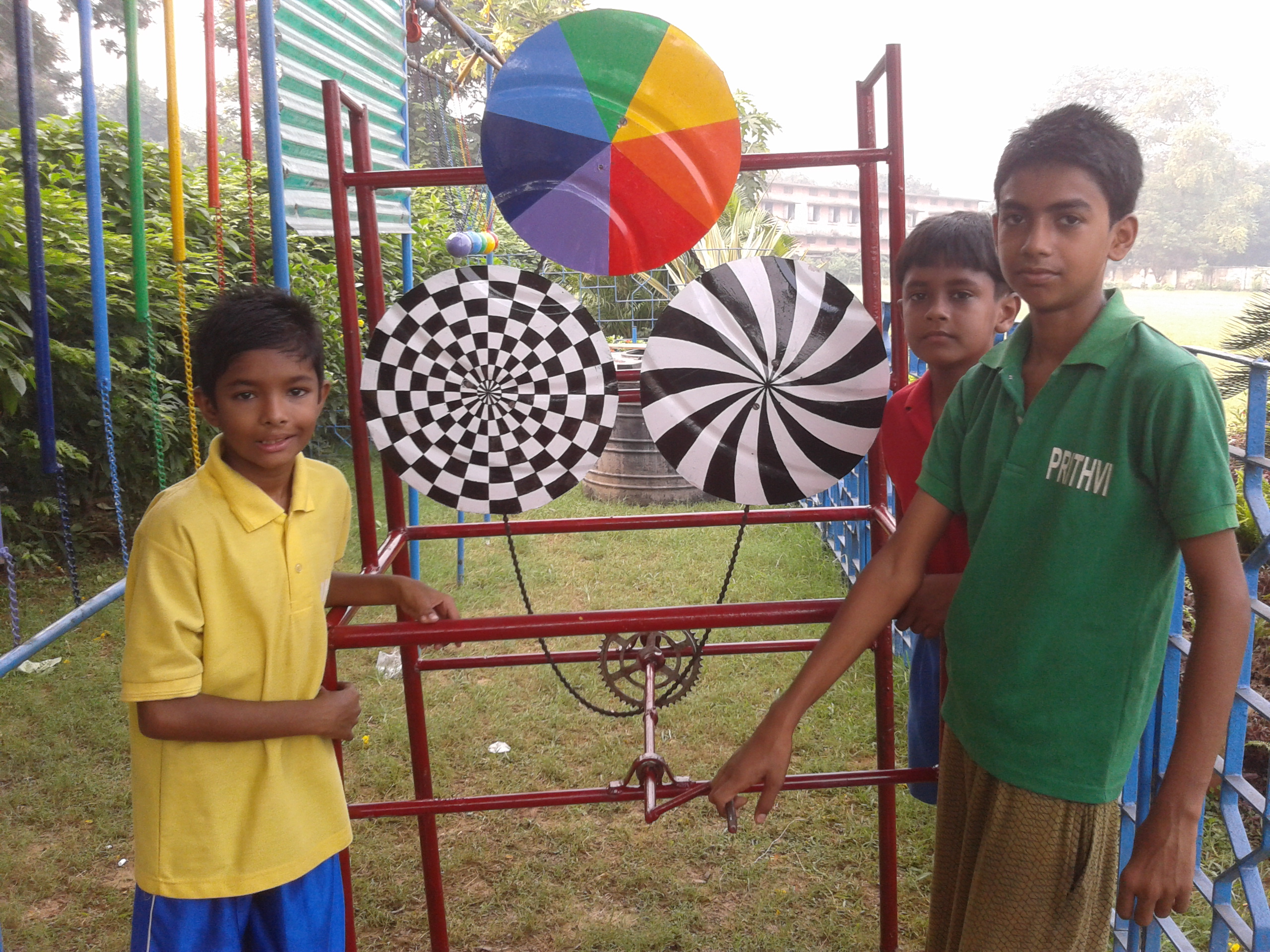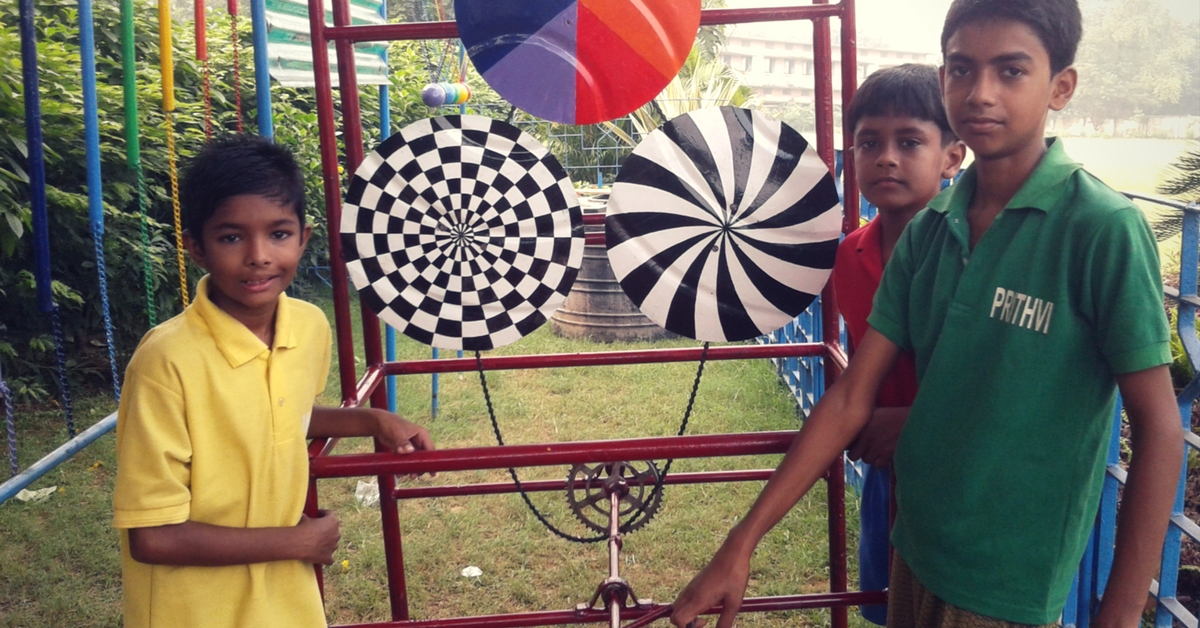Believing that “charity begins at home”, students at JUSCO School South Park in Jamshedpur, Jharkhand, set out brainstorming over what problems they could address in their school. One boy, 13-year-old Akshit, expressed that he had difficulty understanding the concept of ‘direct proportionality between time period and length of the pendulum’ in science. Investigating this difficulty, the students realised that several others from grades VI through X, besides Akshit, similarly experienced difficulty in grasping science concepts, such as the double helical structure of a DNA.
The students – Rishabh Tiwary, Afsha Nigar, Akarsh Narayan, Sonali Saurav, Minali Gupta, Kunal Mohanta, Ayush Tiwary, Tezender Singh and Shaista Naz – organised a meeting with their science teacher Mili Sinha and Principal Shovna De.
The group collectively came up with the idea to make a Science Park so that students could learn science concepts through a play-way method.
Instead of hiring a specialist to design the park or buying science equipment from a branded agency, the students decided to put the waste material that was lying in JUSCO’s junkyard to better use. Scavenging for usable pipes and sheets, they worked with a blacksmith to make the science gadgets, with the whole exercise bringing the staff and students together.
You might enjoy reading: These 12-Year-Old Quadruplets Are Helping Children With Special Needs in an Inspiring Way
Using waste material, the students designed a total of ten gadgets across fields like genetics, mechanics, sound and light – through periodic tables, a DNA double helix, pulleys, musical pipes, optical illusions, etc.
The total cost for building the science park, including welding charges and cost of paint, was a mere Rs 10,000, as opposed to the market price of Rs 1,50,000.
Here are a few of the gadgets:

Source: Shovna De and stories.dfcworld.com
By adopting the simple 4-step design-thinking framework of Design for Change – a not-for-profit organisation that challenges children to solve problems in their community – the students went about addressing their collective issue of difficulty in learning step-by-step. DFC’s FIDS framework encourages children to first ‘feel’ for an issue, then ‘imagine’ a way out of it, then ‘do’ something about it and go on to ‘share’ their idea with more people.
This story was selected amongst the top 20 stories globally for Design for Change’s ‘Be the Change’ Conference, 2013, organised in India.
You can watch their full story here:
An integral part of the science syllabus now, the students say that the creation of the Science Park has significantly improved student engagement and performance in the sciences.
Be a part of one of the largest global movements of children driving change in their communities. Take up the ‘I CAN School Challenge’ in your classroom. Find out more online, or reach out to Design For Change on +91-95999-16181.
Like this story? Or have something to share?
Write to us: contact@thebetterindia.com
Connect with us on Facebook and Twitter.
NEW: Click here to get positive news on WhatsApp!
If you found our stories insightful, informative, or even just enjoyable, we invite you to consider making a voluntary payment to support the work we do at The Better India. Your contribution helps us continue producing quality content that educates, inspires, and drives positive change.
Choose one of the payment options below for your contribution-
By paying for the stories you value, you directly contribute to sustaining our efforts focused on making a difference in the world. Together, let's ensure that impactful stories continue to be told and shared, enriching lives and communities alike.
Thank you for your support. Here are some frequently asked questions you might find helpful to know why you are contributing?

